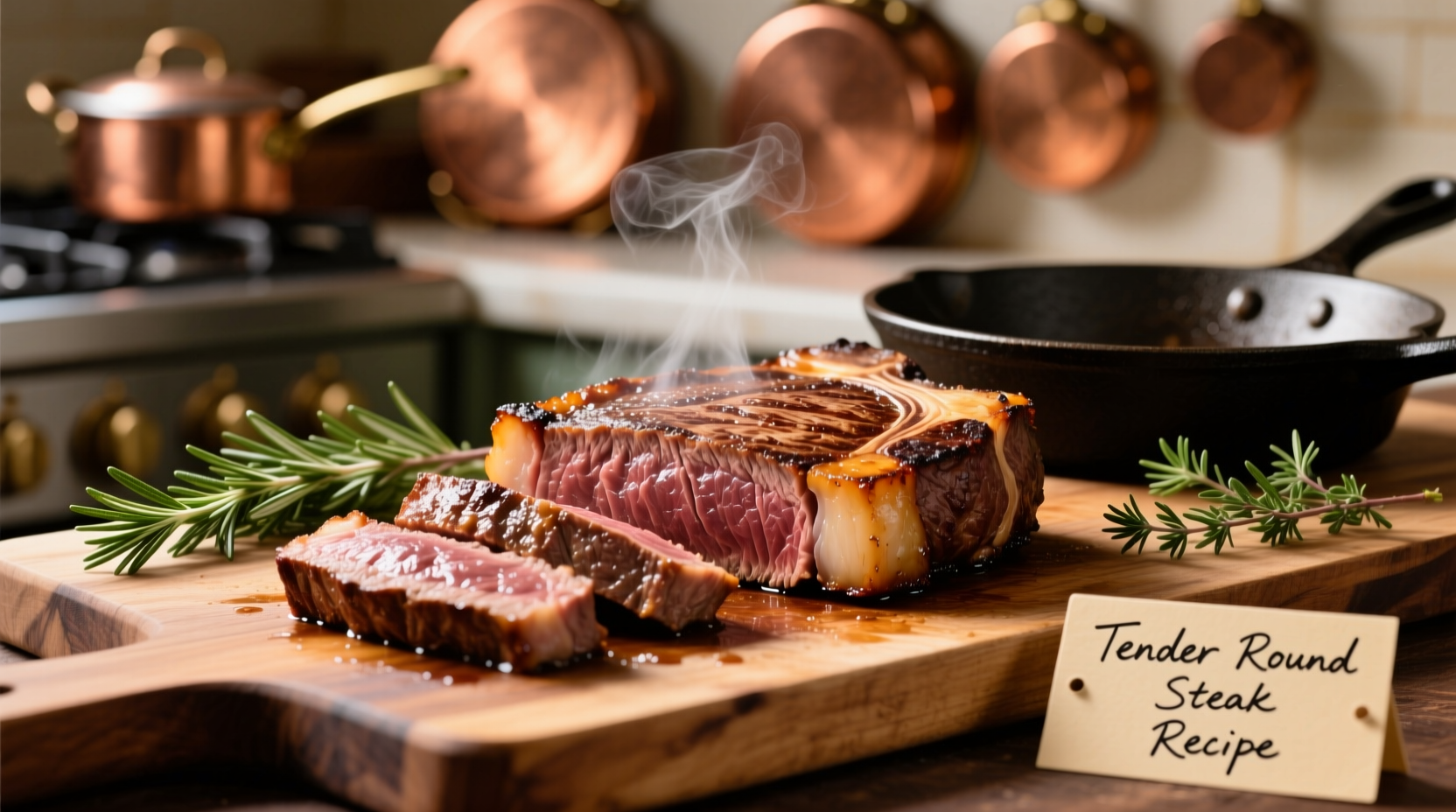Round steak comes from the rump section of the cow and contains dense muscle fibers with minimal marbling. Without proper preparation, this affordable cut becomes notoriously chewy. The secret lies in understanding the muscle structure and applying targeted tenderizing techniques before cooking.
Why Round Steak Needs Special Attention
Unlike premium cuts like ribeye or filet mignon, round steak contains long, tough muscle fibers and connective tissue. According to the USDA Agricultural Marketing Service, this cut contains only 3-5% intramuscular fat compared to 15-20% in well-marbled steaks. This structural difference explains why standard grilling methods often fail with round steak.
| Cut Type | Fat Content | Recommended Cooking Method |
|---|---|---|
| Round Steak | 3-5% | Slow cooking, braising, pressure cooking |
| Ribeye | 15-20% | Grilling, pan-searing |
| Filet Mignon | 8-12% | Sous vide, reverse sear |
Step 1: Proper Preparation Techniques
Before any tenderizing begins, proper preparation sets the foundation:
- Thaw correctly: Never cook frozen round steak. Thaw in refrigerator for 24-48 hours for even texture
- Trim strategically: Remove only excess fat and silver skin—some fat provides flavor during slow cooking
- Score the surface: Make shallow diagonal cuts ¼ inch apart across the grain to break up tough fibers

Step 2: Science-Backed Tenderizing Methods
Choose one primary method based on your available time:
Salt-Based Tenderizing (24-hour method)
Cover both sides with 1 teaspoon kosher salt per pound. Refrigerate uncovered for 12-24 hours. The salt draws out moisture, then reabsorbs with dissolved proteins that break down muscle fibers. Rinse thoroughly before cooking. This technique leverages American Meat Science Association research showing salt's enzymatic tenderizing effects.
Acid Marinade Method (4-12 hour method)
Combine ½ cup buttermilk or yogurt with 2 tablespoons vinegar, 2 minced garlic cloves, and fresh herbs. The lactic acid gently denatures proteins without making the surface mushy. Avoid citrus-based marinades which can over-tenderize the exterior.
Mechanical Tenderizing (Immediate method)
Use a Jaccard tenderizer (12-24 blades) pressing vertically into the steak. Create 60-80 punctures per side. This physically severs connective tissue while preserving the steak's integrity better than hammering.
Step 3: Optimal Cooking Techniques
Round steak requires low-and-slow cooking to transform collagen into gelatin:
Braising Method (Best results)
- Preheat oven to 275°F (135°C)
- Sear steak 2 minutes per side in hot oil
- Place in Dutch oven with 1 cup liquid (beef broth + red wine)
- Cover and cook 2-3 hours until internal temperature reaches 195°F (90°C)
- Rest 20 minutes before slicing against the grain
Pressure Cooking Method (Fastest option)
Cook on high pressure for 45 minutes with 1 cup liquid, followed by natural release for 15 minutes. This method achieves similar collagen breakdown in ¼ the time of traditional braising.
Critical Resting Period: The Final Step
Never skip resting! After cooking, tent loosely with foil and rest for 15-20 minutes. During this time, the muscle fibers reabsorb juices that would otherwise bleed out when sliced. Cutting too soon wastes all your tenderizing efforts.
Common Mistakes That Ruin Round Steak
- Overcooking: Round steak becomes dry beyond 200°F (93°C)—use a thermometer
- Insufficient resting: Cutting too soon releases precious juices
- Wrong slicing direction: Always cut perpendicular to the muscle fibers
- Misjudging marinade time: Acidic marinades beyond 12 hours make texture mushy
Pro Tips for Perfect Results Every Time
- Add 1 tablespoon tomato paste to braising liquid—it contains enzymes that accelerate tenderizing
- Include onions and carrots in braising liquid—they release natural sugars that counteract toughness
- For pan-searing, freeze the steak for 30 minutes first to maintain shape during cooking
- Always slice against the grain at a 45-degree angle for maximum tenderness











 浙公网安备
33010002000092号
浙公网安备
33010002000092号 浙B2-20120091-4
浙B2-20120091-4